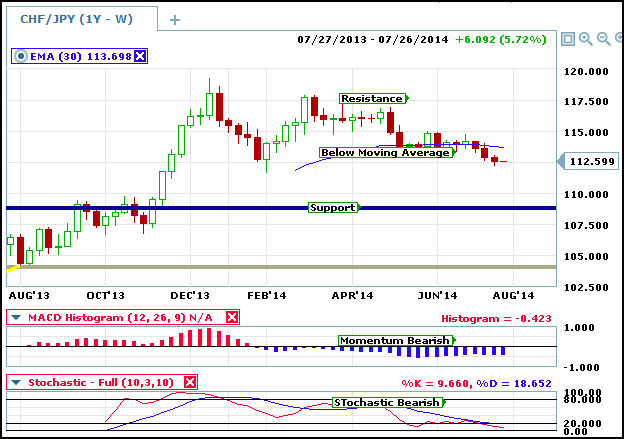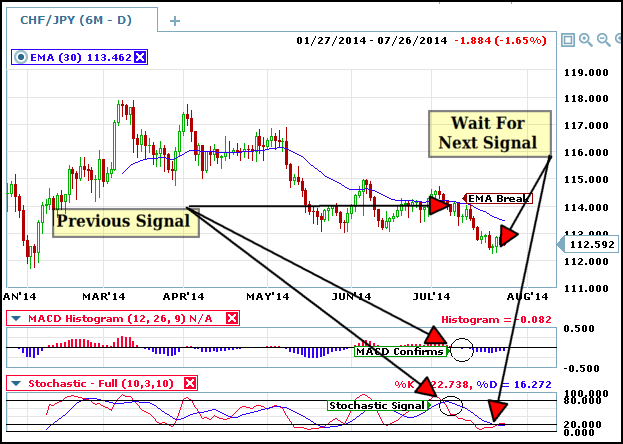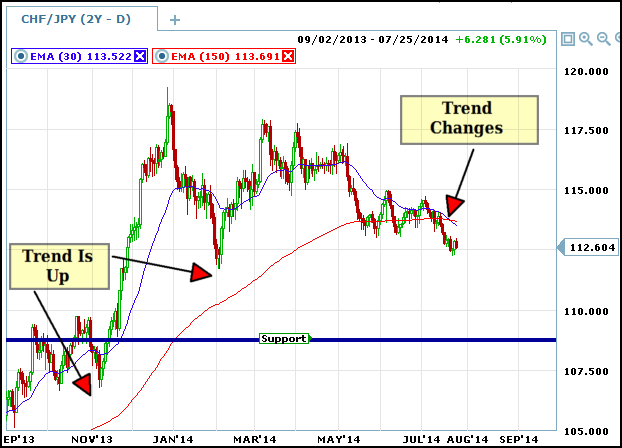Applying Multiple Time Frame Analysis
Multiple Time Frame Analysis, or MTA from here, is a well recognized form of technical analysis and one used by nearly every trader, even if they don’t realize it. I speak and write of it often, as does Cory, another of BONETS pro traders. While not a requirement for success, it is a strategy that can boost your returns in several ways. For pips traders, a signal in line with underlying time frames can produce a move of greater proportion than other signals. For binary traders, a signal in line with the uderlying time frame can be the starting point for an extended winning streak. I’m not saying that you won’t have losses, that would be ridiculous, but you will find a higher number of profitable trades than without.
There are a couple of ways to use this technique and even a few indicators that utilize it as well. The first and most obvious method is to use different charts. I like to trade signals off of the daily charts so for me, MTA means using weekly, daily and hourly/30 minute charts. This is because of bracketing. This means that my signal chart, the daily, is bracketed on either side by my trend chart, the weekly, and my entry chart, the hourly. In order to make a trade I start with the weekly chart. Once analyzed, with trend determined, I can move down to the daily chart and look for a signal in line with that trend. Once a signal is identified it is time to move down to the entry chart. The entry chart, hourly or 30 minute candlesticks, will provide an additional signal and that is when I get into my trade. Trades made with this technique have triple confirmation; the long term trend, the trend following signal and the trend following entry. The good news is that you don’t have to use my time frames. If you are using a strategy that targets 15 minute or 30 minute charts for entries you could bracket with daily charts for trend and 5 minute charts for entry.
In practice this is how it works. I use stochastic, MACD, trend lines, exponential moving average and support/resistance to make my trading decisions. Each has its own signals, when they converge and confirm each other I make a trade. For example, a bullish MACD cross followed by a bullish stochastic crossover with a price bounce from EMA/support is a strong signal. If this occurs on the weekly charts the underlying trend is bullish, be it the primary or secondary trend. At this time I move down to the daily charts and await a trend following signal in line with the weekly charts. Then move down to the hourly and await another signal. The thing to keep in mind is that one, this strategy can take along time to set up. The second is that once the trend is set on the weekly charts it may last for several weeks or months and any trend following signal on the daily charts following it will be good until the trend reverses. The same is true of the hourly charts. In this respect a weekly signal may last 3 months and provide multiple daily signals. Each daily signal will last for several days or weeks and provide numerous entries. If there are 6 hourly entries for each daily signal, and 6 daily signals for each monthly signal and 6 monthly signals a year that means there could be as many as 216 high probability trades a year. Since there are only 260 possible trading days, not counting holidays, you could feasibly get a good signal every day. Not too bad.
Multiple Time Frames On One Chart
It is possible to analyze multiple time frames on one chart. You can do this by adjusting a single indicator to measure more than one time frame or an indicator that already incorporates multiple time frames. One indicator that does this is Elliot Waves. This is an array of multiple moving averages that provide signals on crossovers. Now, take my previous example. I use a 30 bar EMA on all my charts. On the daily charts this is equal to a 30 day moving average. On the weekly charts it is equal to a 150 day moving average. So, I could add an additional moving average to my daily charts, a 150 bar, and get the same reading as on the weekly chart with a 30 day. Now a more in depth analysis can be made using only one chart and one indicator yet still utilize and profit from MTA. The two moving averages can be used alone, in tandem, to provide trend following signals on a crossover or with other indicators as confirmations. MACD and stochastic can both be modified in the same manner so that you can use the same indicator, on one chart, in two or more time frames.


